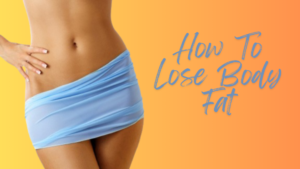Embarking on a weight loss journey without hunger or deprivation might seem like a dream, but the Atkins diet for weight loss brings it to reality. This low-carb diet has helped millions worldwide shed pounds, bolster health, and achieve wellness goals without the usual dietary restrictions. Far from being a mere trend, the Atkins diet plan is rooted in science, offering benefits like enhanced fat burning, improved blood sugar levels, and a reduced risk of heart disease. In this guide, we dive into the essentials of the Atkins diet, including its principles, what foods to savor, and the remarkable advantages you can expect. Plus, we’ll share motivational Atkins diet success stories from individuals who have dramatically changed their lives with Atkins. Whether you’re just starting or seeking to deepen your understanding, this post equips you with the knowledge and inspiration needed to embark on your Atkins journey confidently, providing a great starting point for the Atkins diet for beginners.
Table of Contents
ToggleThe Foundations of the Atkins Diet
The Atkins Diet emphasizes a low-carb intake alongside a higher consumption of fats and proteins. It’s designed to aid in weight loss and enhance overall health. So, what’s the mechanism behind it, and what stages does one undergo while following the diet? Let’s dive in.

What Is the Atkins Diet?
Originating in the 1960s by Dr. Robert C. Atkins and popularized through a bestselling book in 1972, the Atkins Diet has guided millions toward their weight loss journeys. By cutting down on carbohydrates, specifically refined ones like sugar, bread, pasta, and cereals, and leaning into fats and proteins found in foods like meat, cheese, eggs, and butter, followers aim to stimulate their bodies into a state of ketosis. In ketosis, your body burns fat for energy instead of glucose, leading to potentially rapid weight loss and other health improvements. Foods like leafy greens, broccoli, cauliflower, and tomatoes are encouraged due to their low-carb content.
Understanding the Phases
The Atkins Diet unfolds across four distinct phases, each with varying carb intakes and dietary options:
- Phase 1 (induction): This is the initial and strictest phase, limiting you to less than 20 grams of net carbs (total carbs minus fiber and sugar alcohols) daily for two weeks to stimulate quick weight loss and enter ketosis.
- Phase 2 (balancing): Gradually, you can reintroduce higher-carb foods, including nuts, berries, and additional vegetables, aiming for up to 40 grams of net carbs per day based on weight loss progress and personal tolerance.
- Phase 3 (fine-tuning): As you approach your target weight, carb intake can increase to 100 grams of net carbs daily, allowing moderate amounts of starchy foods like potatoes, rice, and oats.
- Phase 4 (maintenance): The final phase provides the most freedom, permitting any amount of healthy carbs that your body can tolerate without regaining weight. This phase is meant to be sustainable for life, with regular monitoring and adjustments to carb intake as necessary.
The Science Behind Weight Loss with Atkins
Research supports the Atkins Diet as an effective method for weight loss and improving various health markers, including blood sugar levels, cholesterol, triglycerides, and blood pressure. Key benefits include:
- Reduced appetite: High-protein and fat diets tend to be more satiating, leading to a natural reduction in calorie intake. Avoiding sugar spikes and dips also curbs food cravings.
- Boosted metabolism: Lower carb consumption forces your body to burn more energy converting fat and protein into glucose – a process known as gluconeogenesis – which can enhance metabolic rate and calorie burn.
- Preserved muscle mass: Often, weight loss involves muscle loss. Consuming sufficient protein and engaging in resistance training helps maintain muscle strength and metabolic health.
- Improved insulin sensitivity: Carbohydrates cause blood sugar spikes requiring insulin to normalize levels. Eating fewer carbs reduces insulin spikes, helping prevent insulin resistance, weight gain, and type 2 diabetes.
Nutritional Balance and Meal Planning on Atkins
Finding success on the Atkins diet boils down to eating the right mix of foods in appropriate proportions. It’s crucial to opt for meals low in carbohydrates but rich in protein, fats, fiber, and nutrients. In this guide, we’ll walk you through the types of foods to enjoy, plan your meals effectively, and tailor the Atkins diet to fit your lifestyle.
Atkins Diet Food List
As you navigate through the Atkins diet, you’ll encounter different food lists tailored to each phase, reflecting your carbohydrate intake and weight loss objectives. Certain foods are staples across all phases, while others are either restricted or avoided altogether. Below are the foods you can relish on the Atkins diet:
- Meats: includes beef, pork, lamb, chicken, turkey, bacon, and ham.
- Fish and seafood: options like salmon, trout, tuna, shrimp, and lobster.
- Eggs: any variety, preferably those enriched with omega-3 or sourced from pastured environments.
- Cheese: enjoy types like cheddar, mozzarella, parmesan, and cream cheese.
- Butter and cream: opt for grass-fed when possible.
- Nuts and seeds: such as almonds, walnuts, and various seeds.
- Healthy oils: choose from olive, coconut, and avocado oils.
- Low-carb veggies: focus on leafy greens, broccoli, cauliflower, and others.
- Low-carb fruits: include berries, cherries, and melons.
- Herbs and spices: all your favorites like garlic, basil, and oregano.
Some items are permissible only in moderation or during the later stages:
- Legumes: beans, lentils, and peas.
- Whole grains: oats, quinoa, and brown rice.
- Starchy veggies: potatoes, sweet potatoes, and corn.
- Higher-sugar fruits: such as bananas and oranges.
- Alcohol: including wine, beer, and spirits.
Certain foods are completely excluded from the diet:
- Sugary items: candy, ice cream, and soda.
- Flour-based products: bread, pasta, and cereal.
- Trans fats: found in margarine and processed foods.
- Vegetable oils: like soybean and canola oil.
- Low-fat or diet products: often high in sugars and carbs.
Sample Meal Plans for Success
To facilitate meal and snack planning on the Atkins diet, you can explore free meal plans and Atkins diet recipes on the Atkins website. These plans are customized according to your dietary phase, carb limits, and personal preferences, with options ranging across Atkins diet phases from quick-start to foodie, budget, and even Atkins diet for vegetarians. Below are examples of daily meal structures you might follow, featuring healthy Atkins diet snacks:
| Phase 1 (20g net carbs) | Phase 2 (40g net carbs) | Phase 3 (60g net carbs) |
|---|---|---|
| Breakfast: Scrambled eggs with cheese and bacon | Breakfast: Greek yogurt with berries and almonds | Breakfast: Oatmeal with milk, walnuts, and cinnamon |
| Lunch: Cobb salad with chicken, avocado, eggs, and blue cheese dressing | Lunch: Turkey and cheese roll-ups with lettuce, tomato, and mayo | Lunch: Chicken and vegetable stir-fry with brown rice |
| Snack: Celery sticks with peanut butter | Snack: Atkins chocolate peanut butter bar | Snack: Apple slices with cheese |
| Dinner: Steak with broccoli and butter | Dinner: Salmon with asparagus and hollandaise sauce | Dinner: Spaghetti squash with meatballs and marinara sauce |
| Dessert: Atkins chocolate coconut bar | Dessert: Strawberries with whipped cream | Dessert: Dark chocolate with almonds |
Making Atkins Work for You
The beauty of the Atkins diet lies in its adaptability to meet individual needs, preferences, and goals. But, is the Atkins diet safe? While generally considered safe for many, consulting with a healthcare provider before starting is recommended, especially if you have underlying health conditions. When pondering over how to lose weight quickly with the Atkins diet, here are some strategies to maximize your Atkins diet experience:
- Monitor your carbs: Utilize the Atkins carb counter or a food diary app to track your daily net carb intake, ensuring you stay within your target range.
- Stay hydrated: Drinking adequate water is essential. Aim for at least 8 glasses a day, increasing this if you’re active or live in a warmer climate.
- Maintain balanced protein and fat intake: These nutrients are crucial for satiety and energy. Aim for moderate servings that suit your dietary needs.
- Incorporate fiber: Fiber supports digestion, cholesterol levels, and regularity without impacting your net carbs. Include a variety of low-carb vegetables, nuts, seeds, and berries in your diet.
- Consider supplements: While the Atkins diet covers most nutritional bases, additional supplements like multivitamins and omega-3s may be beneficial, especially in the beginning.
- Exercise regularly: Finding an enjoyable form of physical activity can boost your metabolism, elevate your mood, and enhance overall health. Aim for 150 minutes of moderate exercise weekly.
- Embrace flexibility: The Atkins diet is designed to be customized. Treat yourself moderately and return to your routine without guilt.
- Seek support: Journeying with others on the Atkins path, whether through an online community or with friends, can offer motivation and advice. Professional guidance from a physician or dietitian is also invaluable.
Testimonials and Success Stories
Discovering real-life success stories is one of the most powerful ways to feel inspired and motivated to embark on the Atkins diet journey. In this section, we’ll share some truly motivational tales of weight loss and improved health thanks to the Atkins diet, along with insights into the lasting benefits of this dietary plan and tips on how to sustain your success over a lifetime.
Real-Life Transformations
The Atkins diet has been a game changer for millions, helping them shed weight and boost their health. Here are a few remarkable transformations:
- Lisa shed 6 pounds in just 5 days—without any exercise. She experienced a surge in energy and decreased bloating.
- Rafael’s incredible 136-pound loss over 15 months led him from a size 48 down to a 34, while also improving his blood pressure and cholesterol.
- Rachel dropped 100 pounds in 10 months, reversed her type 2 diabetes, and eliminated joint pain.
- Ted lost 157 pounds in 18 months, gaining in sleep quality and mental clarity.
- Renee saw a 38-pound decrease in 6 months and overcame her acid reflux and irritable bowel syndrome.
These inspiring stories are just the tip of the iceberg of life-changing journeys with the Atkins diet. Visit the Atkins website to explore more testimonials and share your own story.
The Long-Term Benefits
But the Atkins diet isn’t just a quick fix—it’s a path to lasting health benefits. Studies have linked it to a reduced risk of chronic illnesses like heart disease, diabetes, and cancer due to its impact on:
- Lowering blood sugar and insulin levels, helping prevent or reverse type 2 diabetes and metabolic syndrome.
- Reducing blood pressure, decreasing the risk of stroke and kidney damage.
- Improving blood lipid profiles by lowering triglycerides and boosting HDL cholesterol, protecting your arteries.
- Decreasing inflammation and oxidative stress, slowing aging and disease development.
- Enhancing hormonal balance and fertility, boosting reproductive health and mood.
- Strengthening the immune system and gut health, aiding in fighting off infections and allergies.
- Boosting brain function and cognitive performance, potentially delaying dementia and Alzheimer’s.
Moreover, the Atkins diet can raise your energy levels, confidence, and happiness, offering a rich variety of delicious foods without hunger or deprivation. Experience the benefits of ketosis, a metabolism state enhancing fat burning, appetite suppression, and mental clarity.
Maintaining Your Success
The Atkins diet isn’t a temporary solution but a lifetime commitment. Here are ways to keep your achievements going:
- Determine your Atkins Carbohydrate Equilibrium (ACE): Find the right carb balance to maintain your weight, adjusting for age, activity, and metabolism.
- Keep an eye on your weight and carbs: Regular weigh-ins and tracking carb intake help manage weight. Adjust carbs as needed to keep on track.
- Stick to the Atkins food principles: Opt for low-carb, high-protein, and fat-rich foods; avoid high-sugar and trans fats; and enjoy plenty of vegetables, nuts, and berries.
- Stay hydrated: Aim for at least 8 glasses of water a day to support detoxification, skin hydration, and digestion.
- Balance protein and fat intake: These nutrients are key to feeling satisfied and maintaining muscle mass while boosting metabolism.
- Consider supplements: Enhance your nutrient intake with multivitamins, fish oil, magnesium, potassium, and sodium, especially during early diet phases.
- Exercise regularly: Find an enjoyable physical activity and keep at it to enhance heart health, mood, and endurance.
- Be adaptable: The Atkins diet offers flexibility to match your preferences and lifestyle, permitting occasional treats as long as you return to the diet’s principles.
- Seek support: Contact the Atkins community, friends, or professionals for advice and encouragement.
Conclusion
The Atkins diet offers a low-carb approach designed to assist in weight loss and health improvement. It encompasses four distinct phases, presenting varying degrees of carbohydrate intake and dietary options. The principle behind the diet is its capacity to reduce your blood sugar and insulin levels, prompting your body to use fat as its primary energy source. Beyond weight loss, the Atkins diet supports numerous long-term health benefits including a reduced risk of chronic diseases, enhanced brain functionality, and an overall boost in life quality. For those considering this lifestyle change, numerous success stories and testimonials are available, showcasing the transformative impact of the Atkins diet. It’s important to understand, however, that adopting the Atkins diet is more than a short-term solution; it’s a commitment to a lifelong journey. Achieving and sustaining success involves identifying your carb equilibrium, regularly monitoring your weight and carb consumption, adhering to the Atkins food recommendations, staying hydrated, consuming adequate amounts of protein and fat, supplementing when necessary, engaging in consistent physical activity, maintaining flexibility in your diet, and seeking support when needed. By following these guidelines, you can secure and enjoy the lasting benefits of the Atkins diet for a happier, healthier future.
FAQ
What foods do you eat on the Atkins diet?
The Atkins diet focuses on a low-carb, high-protein intake, encouraging the consumption of meats, eggs, fatty fish, cheese, and low-carb vegetables. It’s important to steer clear of high-carb foods such as bread, pasta, rice, potatoes, sweets, and most fruits to adhere to the diet’s guidelines.
Is there a difference between Atkins and keto?
Yes, there’s a key difference between the Atkins and keto diets. Atkins introduces a four-phase plan that gradually increases the carbohydrate intake, whereas keto maintains a consistent low-carb limit. Moreover, keto specifically aims to keep the body in a state of ketosis, a goal not pursued by the Atkins diet.
Is Atkins effective for losing belly fat?
Many people ask, “Can I lose belly fat with the Atkins diet?”. Following the Atkins diet may aid in losing belly fat due to its low-carb intake, which prompts the body to use fat as its primary fuel source, potentially targeting abdominal fat. However, it’s worth noting that the diet might elevate LDL (bad) cholesterol levels in some individuals, potentially heightening the risk of heart disease. Therefore, while the principle of the Atkins diet is effective for some, individual results can vary, and it’s crucial to approach it with caution and consider medical advice for your specific health needs.
Is the Atkins diet healthy or unhealthy?
The Atkins diet, known for its low-carbohydrate, high-protein approach, can support weight loss efforts. However, it’s also associated with some health risks, such as an increased likelihood of colon cancer, kidney stones, osteoporosis, and heart disease. It’s crucial to weigh these potential drawbacks against the diet’s benefits.


















